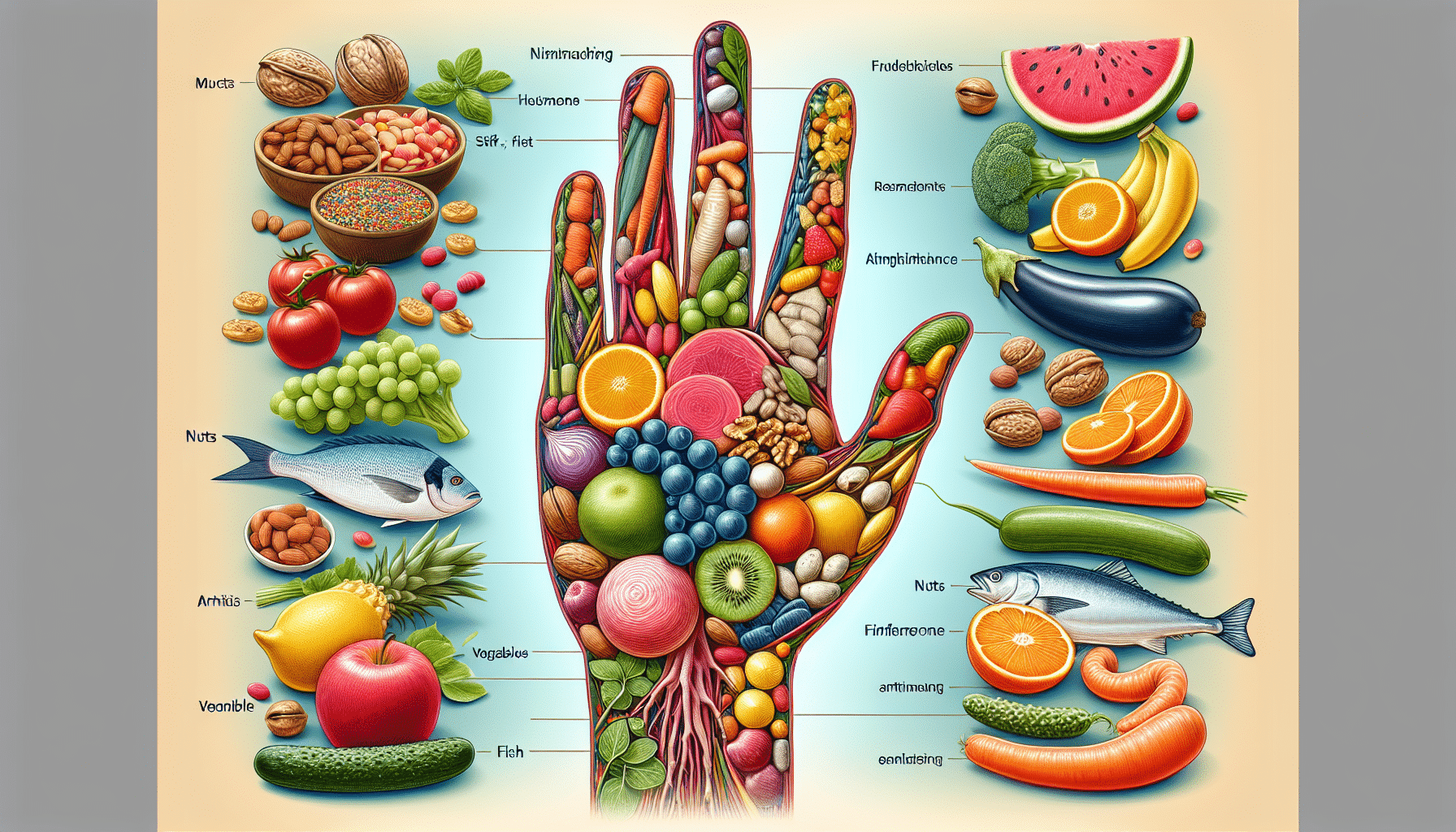
Living with arthritis can be a challenge, but with the right habits, you can minimise pain and enhance your mobility.
In this article, you will discover a guide that will help you foster arthritis-friendly habits, offering practical tips and insights to help you manage your condition more effectively. By implementing these habits into your daily life, you can take control of your arthritis and improve your overall quality of life.
So, let’s dive right in and explore the world of arthritis-friendly habits together!
Understanding Arthritis
Arthritis is a common condition that affects millions of people worldwide. It refers to the inflammation and stiffness of one or more joints, leading to pain and reduced mobility. There are several types of arthritis, each with its own characteristics and causes. By understanding the different forms of arthritis, you can better manage your symptoms and seek appropriate treatment.
Types of Arthritis
There are more than 100 different types of arthritis, but the most common ones include osteoarthritis, rheumatoid arthritis, and psoriatic arthritis. Osteoarthritis is a degenerative form of arthritis that occurs when the protective cartilage in the joints wears down over time. Rheumatoid arthritis is an autoimmune disease in which the body’s immune system mistakenly attacks the joints. Psoriatic arthritis is a type of arthritis that affects individuals with psoriasis, causing joint pain and inflammation.
Causes and Risk Factors
The exact cause of arthritis is often unclear, but there are several factors that can increase your risk of developing the condition. Age, genetics, previous joint injuries, and obesity are common risk factors for arthritis. Additionally, certain occupations that involve repetitive joint movements or strenuous physical activity can also contribute to the development of arthritis.
Symptoms of Arthritis
The symptoms of arthritis may vary depending on the type and severity of the condition. Common symptoms include joint pain, stiffness, swelling, and reduced range of motion. Some individuals may also experience fatigue, fever, and overall discomfort. It is important to consult with a healthcare professional if you experience these symptoms to receive an accurate diagnosis and appropriate treatment.
Medical and Therapeutic Treatments
While there is no cure for arthritis, there are several medical and therapeutic treatments available to manage symptoms and improve quality of life. These treatments aim to reduce pain, inflammation, and joint damage.
Medications
Medications are commonly prescribed to relieve pain and inflammation associated with arthritis. Nonsteroidal anti-inflammatory drugs (NSAIDs) are often recommended to reduce pain and swelling. Corticosteroids may be prescribed for short-term relief of severe symptoms. Disease-modifying antirheumatic drugs (DMARDs) and biologics may be used to manage rheumatoid arthritis and other autoimmune forms of arthritis.
Physical Therapy
Physical therapy is an essential component of arthritis treatment. A physical therapist can guide you through specific exercises to improve joint strength, flexibility, and overall mobility. They may also use techniques such as heat and cold therapy, electrical stimulation, and manual therapy to reduce pain and improve range of motion.
Surgical Options
In severe cases of arthritis, when other treatments have not been effective, surgery may be considered. Joint replacement surgery, such as knee or hip replacement, can alleviate pain and restore function in damaged joints. Arthroscopy, a minimally invasive procedure, may be used to repair or remove damaged tissue within a joint.

This image is property of images.pexels.com.
Exercise and Physical Activity
Regular exercise and physical activity are crucial for individuals with arthritis. Although it may seem counterintuitive to move when experiencing joint pain, exercise can actually help reduce symptoms, improve mobility, and enhance overall well-being.
Types of Exercises to Try
Low-impact exercises are ideal for individuals with arthritis as they are gentle on the joints while still providing numerous benefits. Some examples include walking, swimming, cycling, and water aerobics. Range-of-motion exercises, strength training, and flexibility exercises can also be beneficial for improving joint health and maintaining a healthy weight.
Considerations for Arthritis-Friendly Workouts
When engaging in physical activity, it is important to prioritise your comfort and safety. Start with gentle exercises and gradually increase the intensity as tolerated. Listen to your body and modify or stop any exercise that causes pain or discomfort. Always warm up before exercising and cool down afterward to prevent injury.
Benefits of Regular Exercise
Regular exercise offers numerous benefits for individuals with arthritis. It helps to maintain joint flexibility, strengthen muscles and bones, manage weight, improve sleep, and boost overall mood and mental well-being. Additionally, exercise can enhance cardiovascular health, reduce the risk of developing other chronic diseases, and increase overall longevity.
Healthy Eating for Arthritis
Your diet plays a vital role in managing arthritis symptoms and promoting overall joint health. Incorporating certain foods into your diet while avoiding others can help reduce inflammation, manage pain, and support joint function.
Anti-Inflammatory Foods
Including anti-inflammatory foods in your diet can help alleviate arthritis symptoms. Examples of anti-inflammatory foods include fatty fish (such as salmon and tuna), nuts and seeds (such as almonds and flaxseeds), fruits (such as berries and cherries), vegetables (such as leafy greens and broccoli), and whole grains (such as brown rice and quinoa).
Nutritional Supplements
Certain nutritional supplements can also support joint health and reduce arthritis symptoms. Omega-3 fatty acids, glucosamine, and chondroitin sulfate are commonly used supplements that have shown potential in reducing pain and inflammation associated with arthritis. It is always best to consult with a healthcare professional before starting any supplements.
Foods to Avoid
Just as there are foods that can help manage arthritis symptoms, there are also foods that can exacerbate inflammation and pain. It is generally recommended to limit or avoid processed foods, sugary drinks, fried and fatty foods, refined carbohydrates, and excessive alcohol consumption. These foods can increase inflammation in the body and contribute to weight gain, which can worsen arthritis symptoms.

This image is property of images.pexels.com.
Managing Weight and Arthritis
Maintaining a healthy weight is crucial for individuals with arthritis. Excess weight puts additional stress on the joints, leading to increased pain and inflammation. By managing your weight, you can relieve joint pressure, reduce symptoms, and improve overall joint health.
The Link Between Weight and Arthritis
There is a strong correlation between weight and arthritis. Excess weight places extra strain on the joints, especially the weight-bearing joints such as the knees and hips. This added pressure can lead to accelerated joint wear and tear, increased pain, and a higher risk of developing osteoarthritis.
Tips for Weight Management
To manage weight effectively, it is important to focus on both diet and exercise. Adopting a balanced and nutritious eating plan, as mentioned earlier, can help in weight management. Additionally, integrating regular physical activity into your routine is essential. Start with low-impact exercises and gradually increase the duration and intensity. Remember, even small weight loss can have a significant impact on reducing arthritis symptoms.
Healthy Eating and Exercise
Combining healthy eating habits with regular exercise can maximize the benefits for individuals with arthritis. The right diet can provide the necessary nutrients to support joint health, while exercise helps maintain a healthy weight, improve cardiovascular health, and enhance overall well-being. Consulting with a healthcare professional and a registered dietitian can help you create a personalized plan that suits your specific needs.
Joint Care and Protection
Taking care of your joints is essential for managing arthritis symptoms and preventing further damage. Practicing proper body mechanics, using joint-friendly tools and equipment, and avoiding joint overuse can help preserve joint function and reduce pain.
Proper Body Mechanics
When performing daily activities or engaging in physical tasks, it is important to practice proper body mechanics. This involves using your body efficiently and avoiding unnecessary strain on the joints. For example, when lifting heavy objects, bend your knees and use your leg muscles rather than relying solely on your back.
Joint-Friendly Tools and Equipment
Using joint-friendly tools and equipment can help reduce joint stress. For instance, using jar openers or electric can openers can ease strain on the hands and wrists. Ergonomically designed furniture, such as adjustable chairs and desks, can ensure proper posture and reduce joint discomfort while sitting or working for extended periods.
Avoiding Joint Overuse
Overusing the joints can contribute to arthritis pain and inflammation. It is important to pace yourself and take breaks during activities that put stress on the joints, such as gardening or housework. Alternating between different tasks can prevent excessive strain on specific joints and distribute the workload more evenly.

Pain Management Techniques
Pain is a common symptom of arthritis, but there are various techniques that can help manage and alleviate pain levels. By utilizing heat and cold therapy, receiving massages and acupuncture, and practicing relaxation techniques, you can reduce pain and improve your overall well-being.
Heat and Cold Therapy
Heat and cold therapy are simple yet effective ways to manage arthritis pain. Applying a heating pad or a warm towel to the affected joints can help relax muscles and reduce stiffness, while cold packs or ice wrapped in a cloth can numb the area and decrease inflammation. It is important to alternate between heat and cold therapy to determine which works best for you.
Massage and Acupuncture
Massage therapy and acupuncture have shown promising results in relieving arthritis pain. Massage can help relax muscles, improve circulation, decrease pain, and increase range of motion. Acupuncture involves the insertion of thin needles at specific points of the body to stimulate nerves and release pain-relieving endorphins. Both techniques can be a valuable addition to your pain management strategy.
Meditation and Relaxation
Practicing meditation and relaxation techniques can help reduce stress levels and manage pain associated with arthritis. Techniques such as deep breathing exercises, guided imagery, and progressive muscle relaxation can promote a sense of calmness and provide relief from pain. Incorporating these techniques into your daily routine can improve your overall well-being and enhance your ability to cope with arthritis symptoms.
Assistive Devices and Adaptations
Assistive devices and adaptations can greatly improve the independence and quality of life for individuals with arthritis. These tools and modifications can help alleviate pain, reduce joint strain, and make everyday activities more manageable.
Choosing the Right Assistive Devices
When selecting assistive devices, it is important to consider your specific needs and limitations. Mobility aids such as canes, walkers, or crutches can provide stability and support during walking. Hand-held or electric tools with ergonomic handles can reduce strain on the hands and wrists. It is advisable to consult with an occupational therapist who can assess your needs and recommend appropriate assistive devices.
Modifications for Everyday Activities
Modifying your environment and daily activities can significantly reduce joint stress. For example, using jar grippers or reachers can make it easier to access objects without bending or twisting. Installing handrails in the bathroom or adding grab bars near stairs can improve safety and stability. Simple adaptations like using cushioned handles on utensils or using lightweight pots and pans can also make cooking more comfortable.
Accessibility at Home and Work
Creating an accessible environment at home and work is essential for individuals with arthritis. Ensure that your living space is free of clutter and obstacles to prevent falls and accidents. Consider installing ramps or elevators to eliminate the need for stairs. At work, adjust your workspace to promote good posture and reduce joint strain. Request ergonomically designed furniture and tools if necessary.
Improving Sleep Quality
Getting adequate sleep is crucial for individuals with arthritis as it allows the body to repair and recharge. However, arthritis pain can often disrupt sleep patterns. By practicing good sleep hygiene, finding a comfortable sleeping position, and managing pain and discomfort, you can improve the quality of your sleep and wake up feeling refreshed.
Sleep Hygiene Practices
Adopting good sleep hygiene practices can promote better sleep quality. Establish a regular sleep schedule by going to bed and waking up at the same time each day, even on weekends. Create a relaxing bedtime routine that includes activities such as reading or taking a warm bath. Keep your bedroom cool, dark, and quiet to create an optimal sleep environment.
Comfortable Sleeping Position
Finding a comfortable sleeping position can be challenging for individuals with arthritis. Experiment with different positions, such as sleeping on your side with a pillow between your knees or using a pillow to support your back if you sleep on your back. It may also be helpful to invest in a mattress that provides adequate support for your joints.
Managing Pain and Discomfort
Managing pain and discomfort is crucial for a good night’s sleep. Applying heat or cold therapy before bed can help relax muscles and reduce inflammation. Taking pain medication as prescribed by your healthcare professional can also provide temporary relief. Additionally, using pillows or cushions to support and cushion your joints can alleviate pressure and reduce pain while sleeping.
Emotional Well-being and Support
Living with arthritis can have a significant emotional impact, as chronic pain and reduced mobility can affect your overall well-being. It is important to develop coping strategies, seek support from loved ones and healthcare professionals, and consider joining arthritis support groups.
Coping Strategies for Emotional Impact
Developing coping strategies for managing the emotional impact of arthritis is essential. Engaging in activities that you enjoy, such as hobbies or spending time with loved ones, can provide a positive distraction from pain and create a sense of fulfillment. Relaxation techniques such as deep breathing or practicing mindfulness can also help reduce stress and promote emotional well-being.
Seeking Support and Professional Help
Seeking support from loved ones and healthcare professionals can provide a valuable source of emotional support. Share your feelings and concerns with family members or close friends who can offer understanding and encouragement. Additionally, consider speaking with a mental health professional who can provide guidance and help develop effective coping strategies for managing the emotional aspects of living with arthritis.
Arthritis Support Groups
Arthritis support groups can be an excellent resource for individuals with arthritis. These groups connect people who are facing similar challenges and provide a supportive community where individuals can share their experiences, exchange advice, and gain emotional support. Arthritis support groups can be found both in-person and online, allowing individuals to connect and receive support from anywhere.
In conclusion, understanding arthritis and implementing arthritis-friendly habits can help minimise pain and enhance mobility for individuals living with this condition.
By following a comprehensive approach that includes medical treatments, exercise, healthy eating, weight management, joint care, pain management techniques, and emotional well-being, individuals can significantly improve their quality of life and better manage their arthritis symptoms. Remember, with the right knowledge, support, and lifestyle adjustments, living well with arthritis is within your reach.







